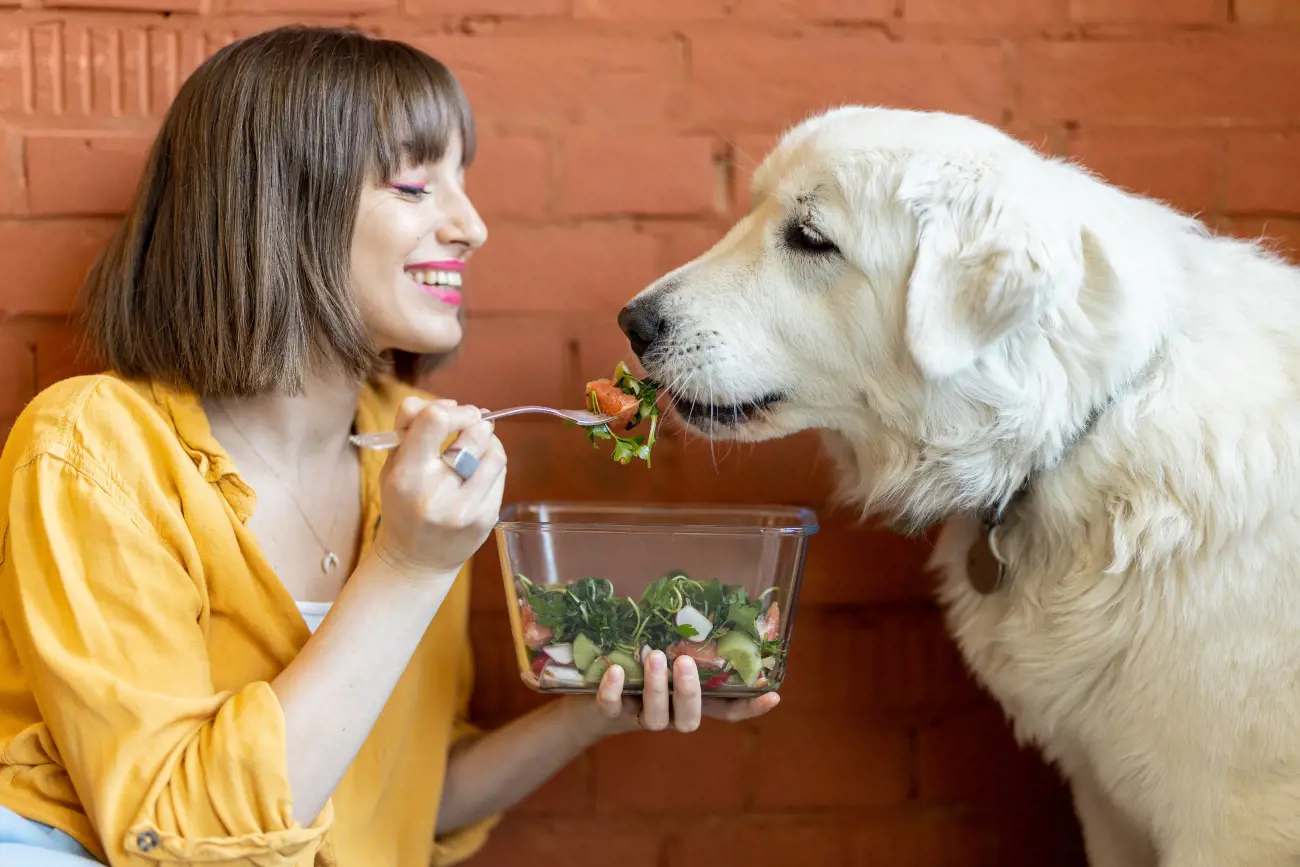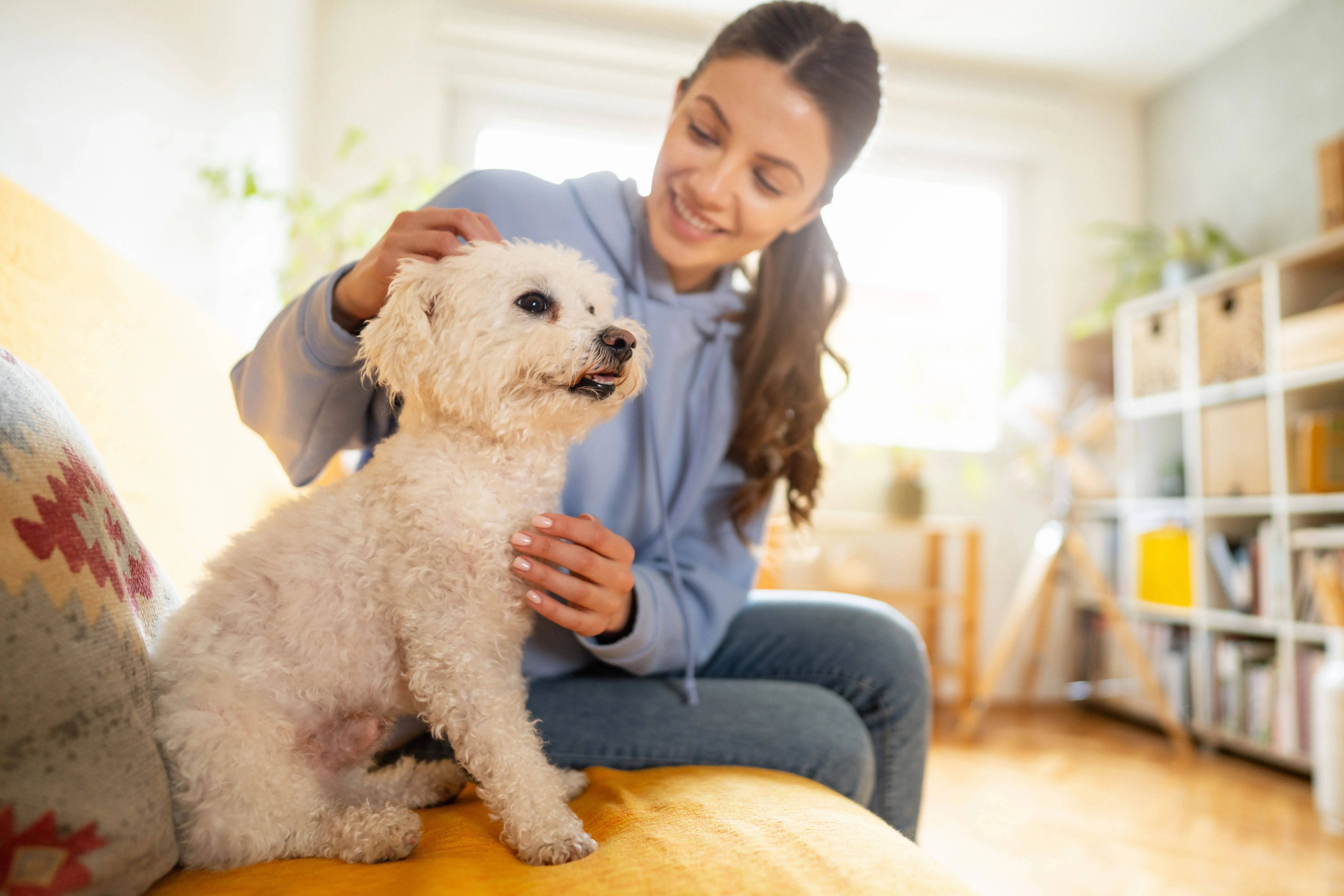How to stop your dog attacking postal workers
11th February, 2022
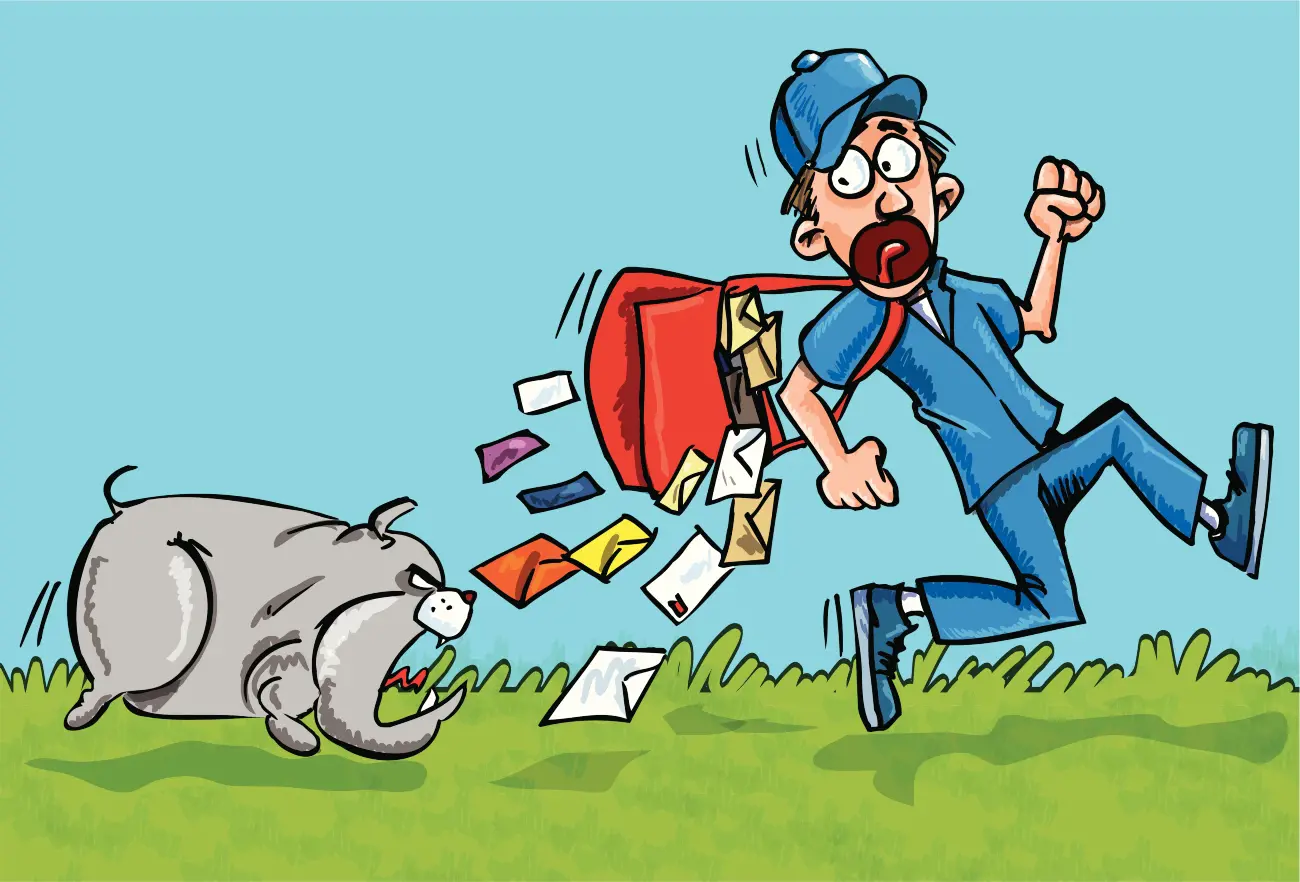
It may conjure up images from children's comics or TV sitcoms but, in reality, the problem of dogs attacking postal workers is a very real one.
Even the most docile dogs can present a danger to our postal workers. That's because these much-loved creatures are, by their very nature, territorial animals. If they feel that there is a threat to their family and home, their natural, protective instincts will kick in and their behaviour can be unpredictable.
According to figures from the ONS, 22 people in the UK were killed as a result of dog attacks between 2013 and 2019.
So, as a responsible dog owner, what can you do to minimise the chances of a stressful, frightening and potentially dangerous attack on your postal worker?
Read on as we uncover some effective strategies for avoiding any canine calamities at delivery time.
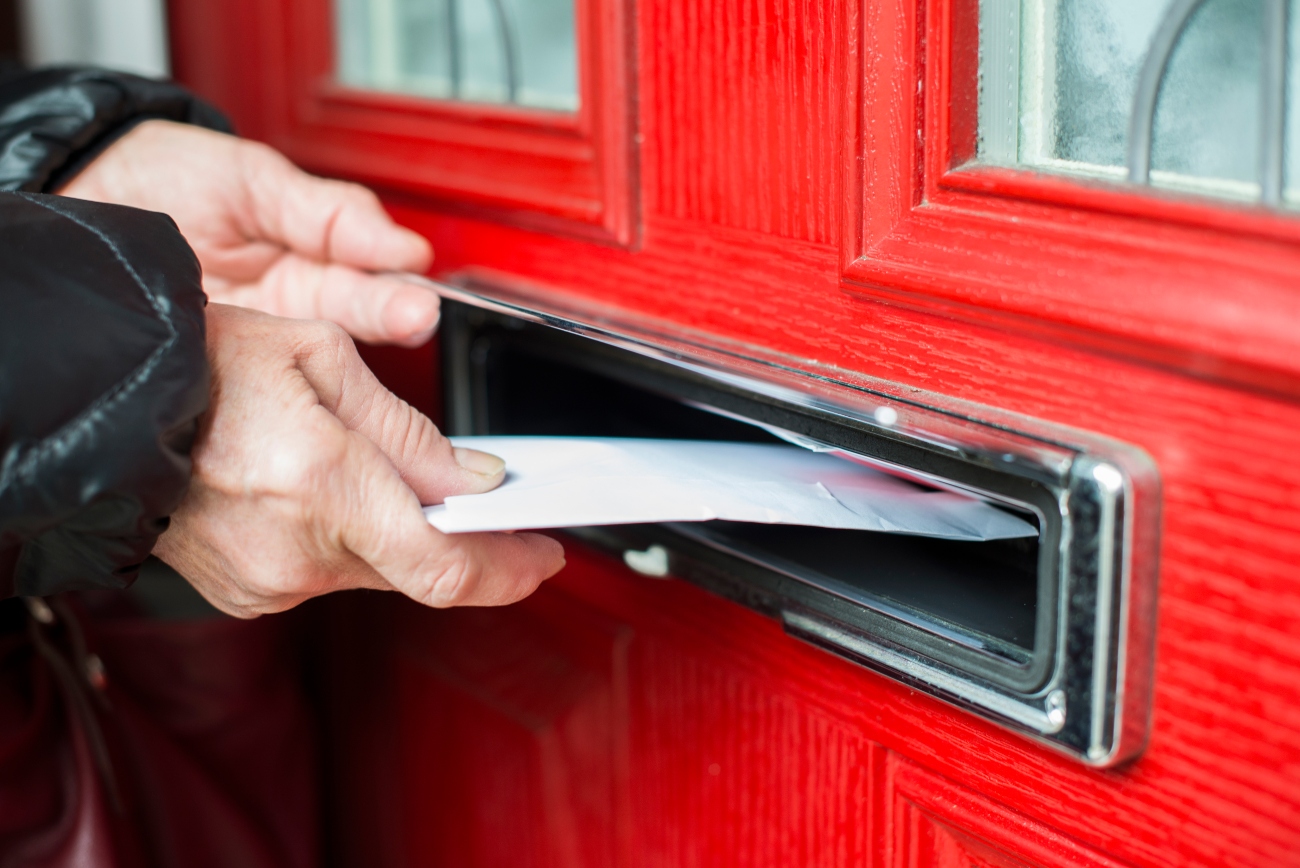
Dog attacks on postal workers: the facts
Statistics from Royal Mail reveal that, during the pandemic year of 2020/21, attacks by dogs on their postal workers dropped by around a third. The postal service announced a 31 per cent drop in these attacks during this period.
The reason for this drop probably isn't too hard to see. The pandemic meant a massive increase in contact-free deliveries, with workers leaving mail or items in the letterbox or outside the front door, before ringing the bell and retreating to a COVID-safe distance. The actual potential for contact with dogs in the home was therefore significantly reduced.
However, even taking this drop into account, there were still no fewer than 33 dog attacks on postal workers every week during the year. And now, with life getting slowly back to normal and contact-free delivery no longer the priority it once was, it's only to be expected that these attacks may start to rise again.
Let’s look at those Royal Mail stats in a bit more detail:
- 690 attacks took place at the front door.
- 520 attacks took place in the garden, driveway or yard.
- 340 attacks took place through the letterbox.
- 130 attacks happened outside in the street.
Between them, these attacks by dogs on Royal Mail workers resulted in more than 900 days of absence from work during the 2020/21 year, with the longest period of absence being 127 days.
Top tips on how to prevent an attack
It’s clear that, as responsible dog owners, we should all be doing our bit to prevent these frightening and potentially dangerous attacks from occurring. But how can we help?
Here are some ideas to help your postal worker deliver your post in safety:
- Make sure your dog is safely away from the front door before the delivery worker arrives. You may want to place them in a room well away from the front door – or even, if you have one, in the back garden. If you do have a back garden, make sure that your dog can't access the front of the house from the back during postal delivery hours.
- Never open the front door when your dog is right behind you.
- Bear in mind that you might be at the door for a few moments, while you sign for an item. During this time, make sure your dog is safely closed away. If you have children in the home, make sure that they won't be opening the door to let the dog out while you are occupied.
- You may need to keep your dog distracted while your mail is being delivered. How about some food or a favourite toy to keep them occupied for these crucial few moments?
- Wait a little time after the postal worker has been, before letting your pet back into the hallway. You just want to keep the situation as calm as possible, rather than having them dashing out to try and catch the ‘intruder’ before the person has got a safe distance away.
- Of course, sometimes you don't even need to interact with the postal worker for there to be danger. There are well-known instances of dogs snapping at delivery workers while they are pushing mail through the letterbox. If your dog is likely to do this, you may want to fit a wire letter receptacle on the inside of your door. This will protect the postal worker's fingers, and will also protect your mail from being chewed by your dog. As an added benefit, it also means you won't be bending down to the floor to retrieve your mail!
- If you find it's not practical, for whatever reason, to keep your dog away from the front door at delivery time, another option is to fit a mailbox on the boundary of your property, so that the postal worker doesn't even need to approach the house.
- It's also a good idea to make sure that your dog is microchipped, and is wearing a collar and tag. Always keep your contact details up to date on the tag and microchip. Read more about how to choose the best collar and lead for your dog elsewhere on our blog.
The importance of puppy socialisation in producing calmer dogs
A large part of your responsibility as a dog owner goes beyond simply trying to keep your dog out of the way. To make these situations less stressful for everyone involved, you'll need to 'socialise' your dog so that they are at ease around strangers, and don’t feel threatened.
In fact, this socialisation needs to happen very early on in your dog's life. The ideal window for socialisation in dogs is between three and 12 weeks, when they are still forming their impressions of the outside world. Of course, you won't be able to bring your puppy home until they are at least eight weeks old, so some of this socialisation will have been done already by a good breeder.
However, over the course of your first few weeks together, you can take great steps towards ensuring that your dog is calm and relaxed, rather than anxious and aggressive, around strangers.
Once they seem to have enough confidence, you can take them to friends' houses and a variety of other situations. It's also a great idea to invite other people to your house, so your puppy can get used to the idea that strange people may come and go – but that these temporary visitors pose no threat to them or to the family.
Around strangers specifically, you should stay as calm and relaxed as possible, and show your puppy that you feel welcoming, not hostile, to these new people. And, if your postal worker is willing, it's a great idea to let them meet your puppy under calm surroundings. This introduction at an early age will create positive associations for your dog.
You can find out more about good practice during these first few weeks, in our ultimate guide to house training your puppy. Of course, this socialisation must continue, and be reinforced, throughout the dog's adult life. If you can make sure that your pup is familiar, and comfortable, with both other dogs and new people, this will greatly reduce the risk of them becoming aggressive.
This socialisation process is particularly important for rescue dogs, and any animals with a history of abuse. These animals may have certain triggers that result in frightened and aggressive behaviour. If you come up against these triggers, you may want to get some more specialist advice from an animal behaviourist. The relevant section of the PDSA website is a great place to start your search for an expert.
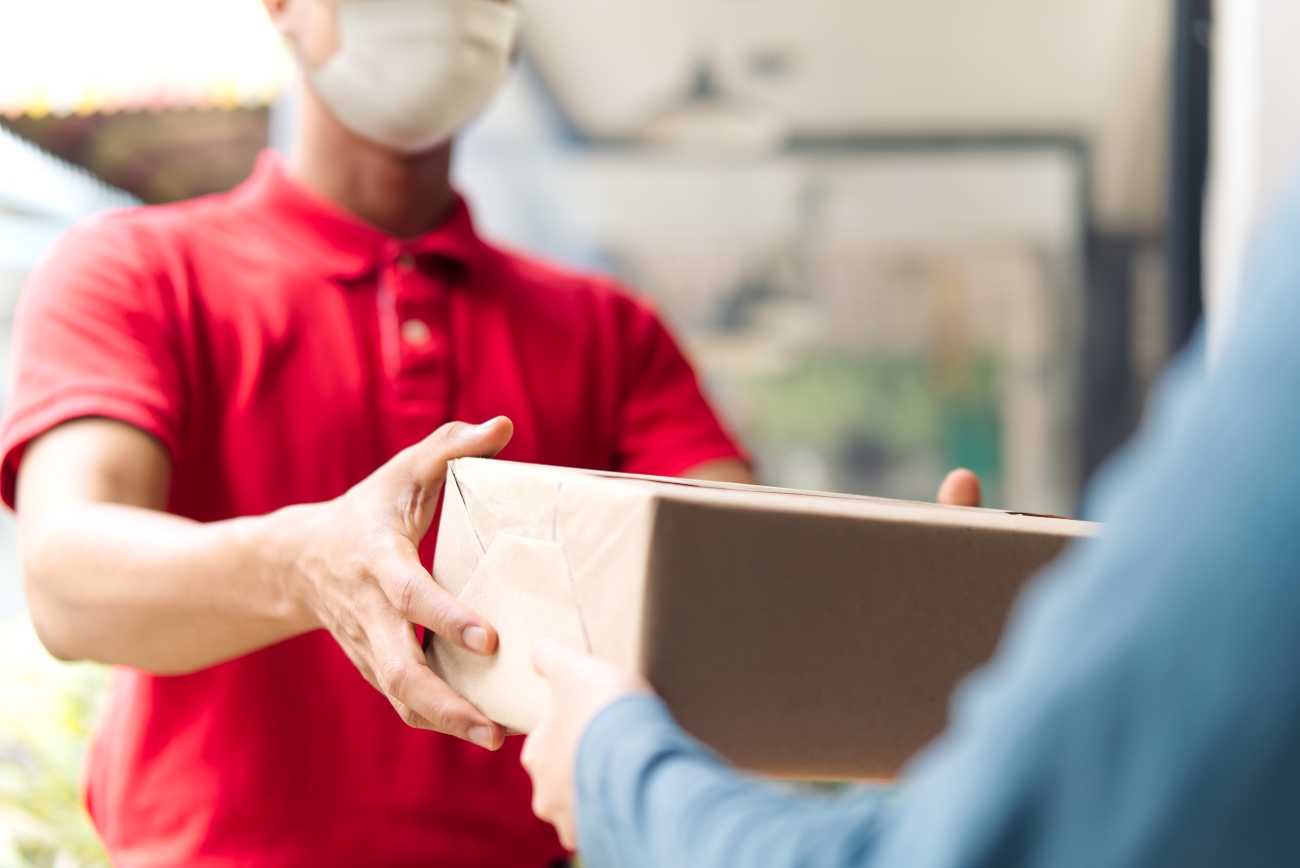
Use positive, reward-based training
Some reward-based training is an essential part of your dog's development, from early puppyhood onwards.
Time spent training your dog not only teaches them useful skills, it also helps to build a strong bond between you. This kind of bond will prove hugely useful in helping your dog to trust you and to obey your commands. It will also help you to be alert to your dog's moods and behaviours – what scenarios trigger anxiety for them, and what warning signs to watch out for when they are becoming unsettled.
A particular form of training you and your dog might find enjoyable is dog agility. We've got much more information on dog agility on this page of our blog. You can also find, elsewhere on our site, some useful advice on how to discourage your dog from biting.
What are the signs of an angry dog?
However much training and positive behaviour reinforcement you've done, there may well be moments when your dog feels stressed, anxious or angry. And it pays to recognise the signs of this fear or anger, and to know what you can do to calm them down.
If you see that your dog is glaring at you, and/or has pinned their ears back, they are clearly in a volatile mood. Perhaps they are showing their teeth and making a low snarling or growling noise. How do you calm them down?
The first step is to be able to spot when your dog is becoming angry or aggressive. After all, as humans we can use our voices and language to convey our emotions – but this option isn't open to dogs, who must find other ways to show us how they feel. And these ways almost invariably use body language.
Here are some of the signs of developing anger that it's useful to recognise:
- Blinking, yawning, or licking their lips. Any of these behaviours may indicate that your dog is starting to feel tense.
- Turning their head or body away, and/or avoiding eye contact. A dog that turns away and/or won't meet your eyes is feeling unhappy or unsettled.
- Walking away from you. Wisely, dogs will often try to remove themselves from a situation which is causing them stress. They just want some time alone, and you should give them that.
- Creeping around. If your dog is stalking around sheepishly with their ears back and tail tucked under, they may be feeling afraid or anxious, and trying to show a submissive attitude. This could be a middle ground between trying to make peace with you and turning angry.
- Lying down, one leg raised. This is another submissive pose. In effect, they're trying to tell you that they don't want to hurt you.
- Stiff posture with raised fur. This very alert, tense posture means that your canine is feeling threatened and is starting to respond with aggression. They may accompany this with a fixed stare.
- Growling, showing teeth, snapping. These are effectively final warnings that you must calm your dog down. Otherwise, a serious biting incident may be imminent.
How to calm down an angry dog
It's important to familiarise yourself with the warning signs above, so you can step in and remove your dog from any stressful situations before they become stressed, angry or aggressive.
But in the event that your dog does reach the final stages of anxiety and stress, and an attack looks possible, there are some effective steps you can take to calm them down before any damage is done.
- Stop whatever you were doing. Perhaps your own behaviour or actions have escalated your dog's anxiety. Pause for a moment and see if they calm down.
- Stay calm. As you will know as a dog owner, these loyal, devoted animals are highly sensitive to their human companions' feelings. If they sense some anger, fear or anxiety, they are likely to pick up on this and get more agitated themselves.
- Speak, and move, calmly. Keep your voice soft, but confident, to show them that you have the situation under control. Keep your movements slow and calm.
- Don’t stare at, or stand over, your dog. Either of these can send a confrontational message to an angry dog.
- Keep their attention on you. Divert them from whatever is causing them distress, by calling their name and giving some clear and simple instructions. If you have mastered the basic commands of ‘come’ or ‘lie down’ this will help.
- Move away slowly. By now, you may have succeeded in calming your dog down. If not, it's unlikely that more of the same will work – so your best choice now is to start backing away, calmly and slowly. Do so while facing your dog all the time (but don’t stare ). Running, or turning your back on them, could both make them chase you.
- Allow them some time to calm down. Don’t rush things: they may need a little time to regain their composure.
You can find some more useful advice on how to handle canine aggression on the RSPCA website. And don't forget that, if you decide to take out dog insurance with Purely Pets, one of the benefits we offer all policyholders is a free 24-Hour Vet Helpline. This means that you can speak to qualified veterinary nurses whenever you need to, about any concern you have, including aggressive doggy behaviour.
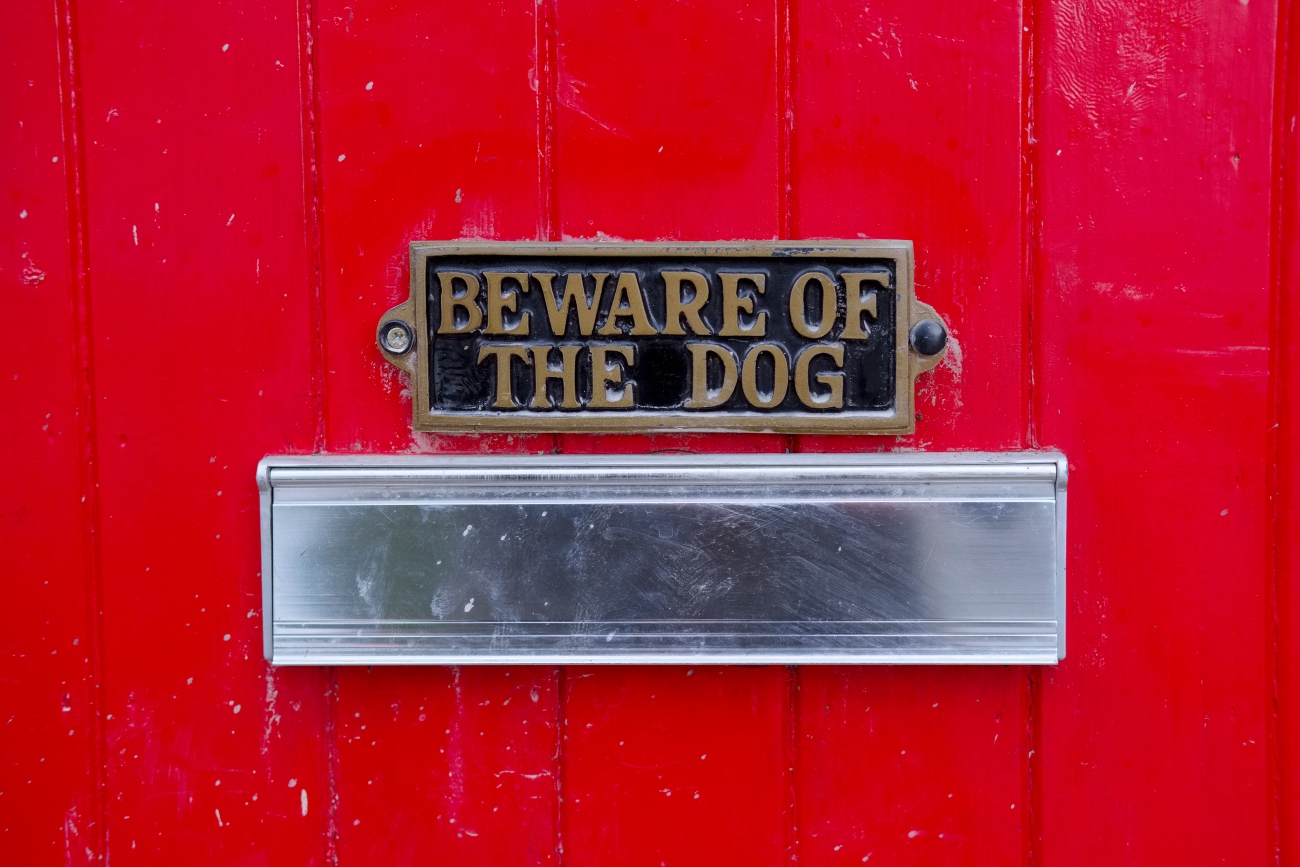
Dangerous dogs and the law
Under the 1991 Dangerous Dogs Act, having a dog that is ‘dangerously out of control’ in public is a criminal offence. And how is 'dangerously out of control' defined? Well, essentially it includes both a dog actually injuring somebody, and giving a person a ‘reasonable’ fear that they may be injured.
More recently, in 2014, that law was extended to include attacks by dogs on private property – including homes.
What kind of punishment can you expect? Penalties can include a prison sentence, an unlimited fine, and a permanent ban from owning dogs in the future. This is definitely one law you don't want to get on the wrong side of.
What to do if your dog is frequently angry
If your dog commonly seems to get aggressive or angry, there are one or two things you may want to look out for. For instance, if your dog seems predisposed towards aggressive behaviour it’s a good idea to get a vet to give them an examination.
They might be struggling with pain that you haven’t noticed before. For this reason, we would recommend having some puppy insurance arranged from an early age.
This dog insurance may be able to help with the costs of a vet consultation like this, as well as any treatment or medications that they might need.
What to do if your dog bites someone
If the worst does happen and your dog bites a postal worker – or indeed anyone else – you have a number of responsibilities, both practical and legal.
You should:
Remove your dog from the danger area.
Your first priority is to secure them and calm them down in order to prevent any further incidents. You will know how best to control your dog, but as a rule of thumb you should try to stay calm and avoid shouting. Avoid eye contact, as that can increase a dog's stress and aggression levels.
Distract them with a favourite toy if you have them, or some other training behaviour that has worked for you. Get them back on their lead as soon as you can do so safely.
Get medical attention.
As soon as you have your dog under control, you should provide support to the person who's been hurt. They may have visible injuries, or they may have something less evident such as a sprain or concussion.
How to treat a dog bite
If you do need to treat a dog bite, either to yourself or to a third person, these are the steps to take as recommended by the NHS:
- Clean the wound. Run it under warm tap water for two minutes. Do this even if there doesn't appear to be any damage at skin level.
- Remove any objects from the bite – teeth, hair, dirt.
- If the wound is not bleeding heavily, you should gently squeeze. This will encourage slight bleeding, so that any infected blood leaves the area. Then dry the wound and use a clean dressing or plaster to cover it.
- If the wound is bleeding heavily, apply a clean dressing over the top and apply pressure.
- Take or give painkillers if you or the person is in pain.
- Finally (and unless the wound seems very minor), seek medical advice. This is to safeguard against infections and to check for any internal damage.
Dog insurance: an essential support
The final thing we would recommend in the event of your dog attacking a postal worker or other member of the public, is some suitable dog insurance. Of course, having some dog insurance in place won't make an attack like this any less likely.
However, it may help with the financial fallout from any attack. For example, if the person is badly injured you may find yourself facing legal action, and your dog insurance policy may cover for you some of the expenses and/or fines that follow.
Contact us today to find out more and get a quote.
Helpful Pages
Recent Posts
Pet Insurance Quote
- 98% claims paid *
- Claims paid directly to vets
- 24/7 vet video consultations
- Interest free monthly payments

